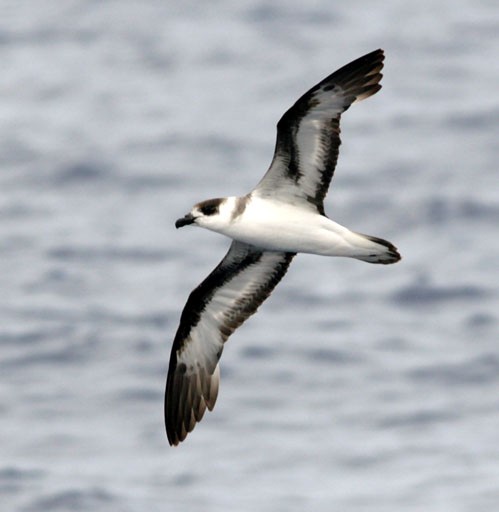Black-capped Petrel
A species of Gadfly Petrels, Also known as White-faced Petrel Scientific name : Pterodroma hasitata Genus : Gadfly Petrels
Black-capped Petrel, A species of Gadfly Petrels
Also known as:
White-faced Petrel
Botanical name: Pterodroma hasitata
Genus: Gadfly Petrels
Content
Description General Info
 Photo By Patrick Coin , used under CC-BY-SA-2.5 /Cropped and compressed from original
Photo By Patrick Coin , used under CC-BY-SA-2.5 /Cropped and compressed from original Description
The black-capped petrel is large compared to other gadfly petrels, with a length of about 16 inches (40.5 cm) and 37 inches (94 cm) wingspan. The most similar species within its range is the Bermuda petrel which is smaller and has a narrower white rump patch and an extensive gray cowl. The great shearwater is also superficially similar. The probably-extinct Jamaica petrel (P. caribbaea) was a related dark form, often considered a subspecies of this bird. The local Spanish name, Diablotín, means "little devil" because of its night-time habits and odd-sounding mating calls, which may have suggested to locals the presence of evil spirits in the dark. The petrel will occasionally utter other croaks and sounds while foraging at sea. The black-capped petrel is nocturnal on its breeding grounds, possibly to avoid predation by gulls, hawks or crows. Like most petrels, its walking ability is limited to a short shuffle to the nest burrow. 
Size
41 cm (16 in)
Life Expectancy
40 years
Nest Placement
Ground
Feeding Habits
Black-capped Petrel's diet consists mainly of fish and squid. This seabird is nocturnal, foraging by night using adept flight skills to snatch prey from near the ocean's surface. It possesses unique adaptations for its maritime feeding lifestyle.
Habitat
The black-capped Petrel typically resides in the open ocean, particularly favoring warmer waters associated with the Gulf Stream. During breeding periods, black-capped Petrel are found in mountainous regions with steep terrain, preferring habitats like open park-like pine savannas or areas with elfin vegetation. Their nesting habitats include cliff faces in open-canopy highland forests. Although black-capped Petrel can adapt to various marine environments, their presence is strongly influenced by the Gulf Stream rather than specific water temperatures and depths.
Nest Behavior
The nesting season for black-capped Petrel spans from late fall to spring, with nocturnal activity around colonies suggesting covert nest-building and courtship rituals; a single burrow is dug by the adults, likely for laying and parental care.
Nest Characteristics
Black-capped Petrel's nests are typically found in colonies on steep cliffs with sufficient soil held by forest vegetation for burrow excavation, suggesting a preference for environments providing both concealment and stability.
Dite type
Piscivorous
General Info
Feeding Habits
Bird food type
Species Status
The species, once abundant in the Caribbean, has declined significantly and is now one of the most endangered seabirds in the North Atlantic along with the Bermuda petrel. In the early 20th century, there was speculation that the black-capped petrel was extinct, but more current population estimates range from 2,000-4,000 individuals. Most of the threats facing the black-capped petrel are on its nesting grounds, where causes for its demise include habitat loss, introduced predators, and direct harvesting by humans. Human predation appears to have become more limited in scope than in historic times, due in part to the species' current scarcity. Deforestation from wildfires and direct human use have likely decreased the amount of suitable nesting habitat available to the black-capped petrel. This is especially true in Haiti, which has suffered severe loss of forest cover in recent years. Current conservation plans for the petrel largely involve preserving forest cover around known nesting areas as well as monitoring and searching for burrows. There are also concerns that hydrocarbon exploration off of the Southeast United States could negatively affect the species' continued survival. In 2018, the US Fish and Wildlife Service proposed listing the black-capped petrel as threatened. 
Scientific Classification
Phylum
Chordates Class
Birds Order
Albatrosses and Petrels Family
Shearwaters and petrels Genus
Gadfly Petrels Species
Black-capped Petrel